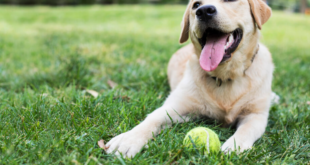The Complete Guide to Crate Training Your Dog – Crate training is a valuable tool when it comes to training your dog. It provides a safe and comfortable space for your furry friend, mimicking a den-like environment that dogs naturally seek. In this guide, we will take you through the process of crate training, step by step, ensuring a positive and successful experience for both you and your dog.
Benefits of Crate Training
Crate training offers numerous benefits for both dogs and their owners. Firstly, it serves as a secure and cozy place for your dog to retreat to, providing them with a sense of security and ownership over their space. Additionally, crate training aids in the prevention of destructive behavior when you are away from home. Dogs are less likely to engage in chewing or other destructive habits when confined to a crate. Moreover, crate training is essential for travel and can make vet visits and other outings less stressful for your pet.
Choosing the Right Crate
Selecting the appropriate crate for your dog is crucial to their comfort and safety. Consider the size and breed of your dog when choosing a crate. It should be spacious enough for your dog to stand, turn around, and lie down comfortably. Opt for a crate made of sturdy materials and ensure proper ventilation. Additionally, consider whether a wire crate or a plastic one would be more suitable for your dog’s needs.

Setting Up the Crate
Before introducing your dog to the crate, it’s important to set it up properly. Place a soft and cozy bed or blanket inside to make it inviting. Avoid using materials that can be easily chewed or ingested. Ensure the
comfortable and quiet area of your home, away from excessive noise or distractions. This will help your dog associate the crate with a calm and peaceful environment.
Introducing Your Dog to the Crate
Introducing your dog to the crate should be a gradual process to avoid any negative associations. Start by leaving the crate door open and allowing your dog to explore it at their own pace. Encourage them to enter the crate by using treats or toys as positive reinforcements. Make the crate a positive and rewarding place for your dog to be in.
Positive reinforcement is key to successful crate training. Whenever your dog enters the crate willingly or displays good behavior inside, reward them with praise, treats, or a favorite toy. This will help them associate the crate with positive experiences and reinforce the desired behavior.
Establishing a Routine
Consistency and a structured routine are essential for crate training. Establish a schedule for feeding, exercise, and potty breaks, and incorporate crate time into this routine. By following a predictable schedule, your dog will quickly learn when it’s time to go into the crate and when it’s time to come out.
Length of Crate Training Sessions
Initially, keep crate training sessions short to prevent your dog from becoming anxious or stressed. Gradually increase the duration as your dog becomes more comfortable and relaxed inside the crate. This will help them build tolerance and reduce any separation anxiety.
Gradual Increase in Time
As your dog becomes accustomed to the crate, gradually increase the amount of time they spend inside. Start with a few minutes and gradually extend it to an hour or more. Ensure your dog has access to water and a comfortable resting area during longer crate sessions.
Crate Training at Night
Crate training can also be applied during nighttime to promote better sleep and prevent accidents. Place the crate in your bedroom or close to your sleeping area, so your dog feels secure and reassured by your presence. Use soothing and calming cues, such as soft music or a cozy blanket, to help your dog relax and settle down for the night.
Crate Training for Potty Training
Crate training is highly effective for potty training your dog. Dogs naturally avoid soiling their sleeping area, so the crate can be used as a tool to teach them bladder control. Take your dog outside to eliminate before placing them in the crate. Maintain a consistent potty schedule, and when your dog shows signs of needing to go, promptly take them outside to the designated potty area.
Common Mistakes to Avoid
There are a few common mistakes to avoid when crate training your dog. Never use the crate as a form of punishment. It should always be associated with positive experiences. Avoid leaving your dog in the crate for extended periods without breaks, as this can lead to anxiety and discomfort. Lastly, never force your dog into the crate or use physical force. This will only create negative associations and hinder the training process.
Troubleshooting Common Challenges
During crate training, you may encounter some challenges. Separation anxiety, whining, or excessive barking can occur. Address these issues by gradually increasing crate time, using calming aids like lavender scents, or providing interactive toys to keep your dog occupied. Consult with a professional dog trainer if the challenges persist.
Gradual Release from the Crate
Once your dog is comfortable and well-trained in the crate, you can begin gradually releasing them from it. Start by leaving the crate door open while you are home and supervising them. Eventually, you can leave them unattended for short periods outside the crate, ensuring they have a safe and dog-proofed space to roam.
Conclusion of The Complete Guide to Crate Training Your Dog
Crate training your dog is a valuable and effective method for providing them with a safe and secure space while promoting good behavior. By following
a step-by-step approach, you can successfully crate train your dog. Remember to choose the right crate, set it up properly, and introduce your dog to it gradually with positive reinforcement. Establish a routine, increase crate time gradually, and use the crate for potty training and nighttime sleep. Avoid common mistakes, troubleshoot challenges, and gradually release your dog from the crate once they are comfortable. With patience, consistency, and positive reinforcement, crate training can be a rewarding experience for both you and your furry companion.
FAQs
- Q: How long does it take to crate train a dog?A: The time it takes to crate train a dog can vary depending on the individual dog and their previous experiences. It can take anywhere from a few days to a few weeks for a dog to become fully comfortable with the crate.
- Q: Can I crate train an adult dog?A: Yes, crate training can be done with adult dogs as well. The process may take a bit longer compared to training a puppy, but with patience and consistency, adult dogs can learn to enjoy their crate as a safe and cozy space.
- Q: Should I leave food and water in the crate?A: It’s generally recommended to remove food and water from the crate during crate training sessions. This helps establish a routine for potty breaks and prevents accidents inside the crate.
- Q: What if my dog doesn’t like the crate?A: If your dog is initially resistant to the crate, take it slow and introduce positive associations gradually. Use treats, toys, and praise to make the crate a positive and rewarding place for your dog. Consult with a professional dog trainer if you need additional guidance.
- Q: Can I use a crate for a dog with separation anxiety?A: Crate training can be helpful for dogs with separation anxiety, as the crate provides a secure and comforting environment. However, it’s important to address the underlying separation anxiety through desensitization techniques and possibly with the help of a professional trainer or behaviorist.
In conclusion of The Complete Guide to Crate Training Your Dog, crate training your dog can provide numerous benefits, including a safe space, better behavior, and easier travel experiences. By following the steps outlined in this guide and using positive reinforcement, you can successfully crate train your dog and create a positive and loving bond between you and your furry friend.
 Treat For Dog – Brain Training for Dogs, Dog Training & Obedience Discover Treat For Dog and get your pup on the path to smarter, happier, and healthier living with brain training for dogs.
Treat For Dog – Brain Training for Dogs, Dog Training & Obedience Discover Treat For Dog and get your pup on the path to smarter, happier, and healthier living with brain training for dogs.




